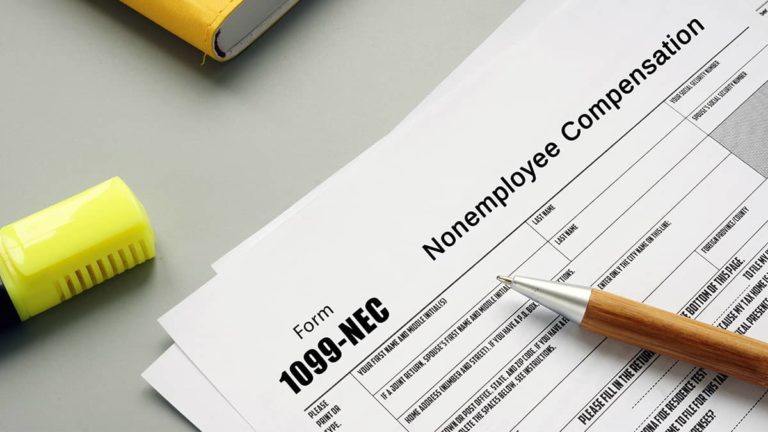How often do you drive to meet a client or your accountant? Do you frequently make bank runs for your business? Depending on your business use of vehicle, you may qualify for a nice-sized tax deduction.
So, do you qualify for the business mileage deduction? What about the Section 179 deduction? If so, how much? Read on to find out how to drive your way to tax savings.
Business use of vehicle and tax savings
If you’re a business owner and use a car for business purposes, you may be eligible for a tax deduction for business use of car.
You can claim a business vehicle tax deduction on cars used 100% or partially for business. If you use the car for both business and personal, you can claim a deduction on the portion that’s for business use.
Business use of car includes:
- Visiting the offices of clients
- Meeting with suppliers and other subcontractors
- Picking up and delivering items to clients
- Driving to the bank for a business transaction
- Going to the store to pick up office supplies
- Meeting with an accountant or small business lawyer for business
Do not categorize commutes to your business from your home or personal errands as business use of vehicle.
So, what kind of tax deduction can you claim for business vehicles? You may be eligible to claim one or both of the following tax deductions relating to a business car:
- Buying a vehicle for business use tax deduction (Section 179)
- Driving a business vehicle tax deduction
1. Buying a vehicle for business use tax deduction (Section 179)
One type of tax deduction you can claim relating to business vehicles is Section 179. A Section 179 deduction helps offset the purchase cost of business property, including vehicles, equipment, and machinery.
To claim a Section 179 deduction, you must:
- Purchase the vehicle for business
- Use the vehicle for business more than 50% of the time
- Only deduct the business use of the car
- Take the deduction in the year you buy and place the vehicle in service (aka when it’s “ready and available”)*
- Understand Section 179 limits, such as the annual deduction amount limit
- Reduce your depreciable basis in the car by the amount of the deduction
- Not claim the standard mileage tax deduction in the same year
*Did you buy the car for personal use, then decide to change it to business use in a later year? If this is the case, you do not qualify for the Section 179 deduction.
To determine the amount of your Section 179 deduction, multiply the cost of your new business vehicle by the percentage of business use. This is the amount eligible for the deduction. Let’s say you buy a new car for $15,000 and use 65% of it for business. Your Section 179 deduction would be $9,750 ($15,000 X 0.65).
Recordkeeping alert! Keep detailed records that show how you acquired the vehicle, who you acquired it from, and when you placed it in service.
For more information on the Section 179 deduction, check out IRS Publication 463.
What to know before buying a new car
Before buying a vehicle for business use, weigh the pros and cons. Although it may make you eligible for a Section 179 tax deduction and future business use tax deductions, consider your additional expenses:
- Upfront cost: Can you afford to pay for the car upfront? If not, can you afford to take on more debt and have a new monthly payment?
- Future costs: After purchasing the car, you’ll have additional expenses, like commercial auto insurance, maintenance, and repairs.
If you decide to buy a car for your business, research the type of vehicle you need (and can afford) and make sure to buy through your business. To cut back on costs, you might consider buying a used vehicle. Keep in mind that you won’t be eligible to claim tax deductions for depreciation if you lease a car.
2. Driving a business vehicle tax deduction
Claiming a tax deduction on your business vehicle purchase isn’t the only way to lower your tax bill. You may also be able to claim a tax deduction for driving your business car.
Self-employed individuals can claim a deduction on the cost of owning and operating a business vehicle. Keep in mind that you or your business must lease or own the car and you can only claim the deduction on the portion you use for business.
If you use your car only for business purposes, you can deduct its entire cost of ownership and operation. Again, do not include drives for commuting or personal errands.
There are two methods you can use to claim the tax deduction:
- Standard mileage rate
- Actual expenses
For both the standard mileage rate and actual expense methods, you can claim a separate deduction for parking fees and tolls.
Standard mileage rate
Under the standard mileage rate method, you can claim a standard amount per mile driven. The IRS sets the amount annually. For 2025, the standard mileage rate is 70 cents per business mile driven, up 3 cents from 2024’s rate of 67 cents.
You cannot use the standard mileage rate if you:
- Operate five or more cars at the same time,
- Claimed a depreciation deduction for the car using any method other than straight-line,
- Claimed a Section 179 deduction on the car,
- Took the special depreciation allowance on the car, OR
- Claimed actual expenses after 1997 for a car you lease
If you choose the standard mileage rate and lease your car, you must use this method for the entire leasing period.
Actual expense method
Under the actual expense method, you must determine how much you spend to operate your car for business.
For the actual expense method, you can include the following costs relating to business use:
- Maintenance and repairs
- Depreciation or lease payments
- Gas
- Tires
- Oil
- Insurance
- Vehicle registration fees
Tips for claiming tax deductions for vehicle expenses
Your business car can be a great way to lower your tax bill. But before claiming the tax deduction, there are several things to remember:
- Keep excellent records: Record your business use of your car diligently (e.g., keep a log of business miles driven, hang onto receipts for gas and repairs, etc.). That way, you can back up your claims.
- Determine your business use of vehicle: Using your records, calculate the percentage of your car used for business purposes (e.g., 60%, 100%, etc.).
- Find your tax savings with both standard mileage and actual expenses: If you’re eligible to claim either the standard mileage or actual expense method for business car use, determine your tax savings with both. That way, you can choose the method that gives you the larger deduction.
- Don’t use standard mileage if you take the Section 179 deduction: You cannot use the standard mileage deduction if you’ve taken the Section 179 deduction in the same year. Instead, use the actual expense method, being sure to show your Section 179 claim.
Keep detailed records of your vehicle expenses to claim tax deductions. Patriot’s online accounting software lets you easily track expenses and income. And, we offer free USA-based support. Get your free trial today!
This article has been updated from its original publication date of February 2, 2023.
This is not intended as legal advice; for more information, please click here.


